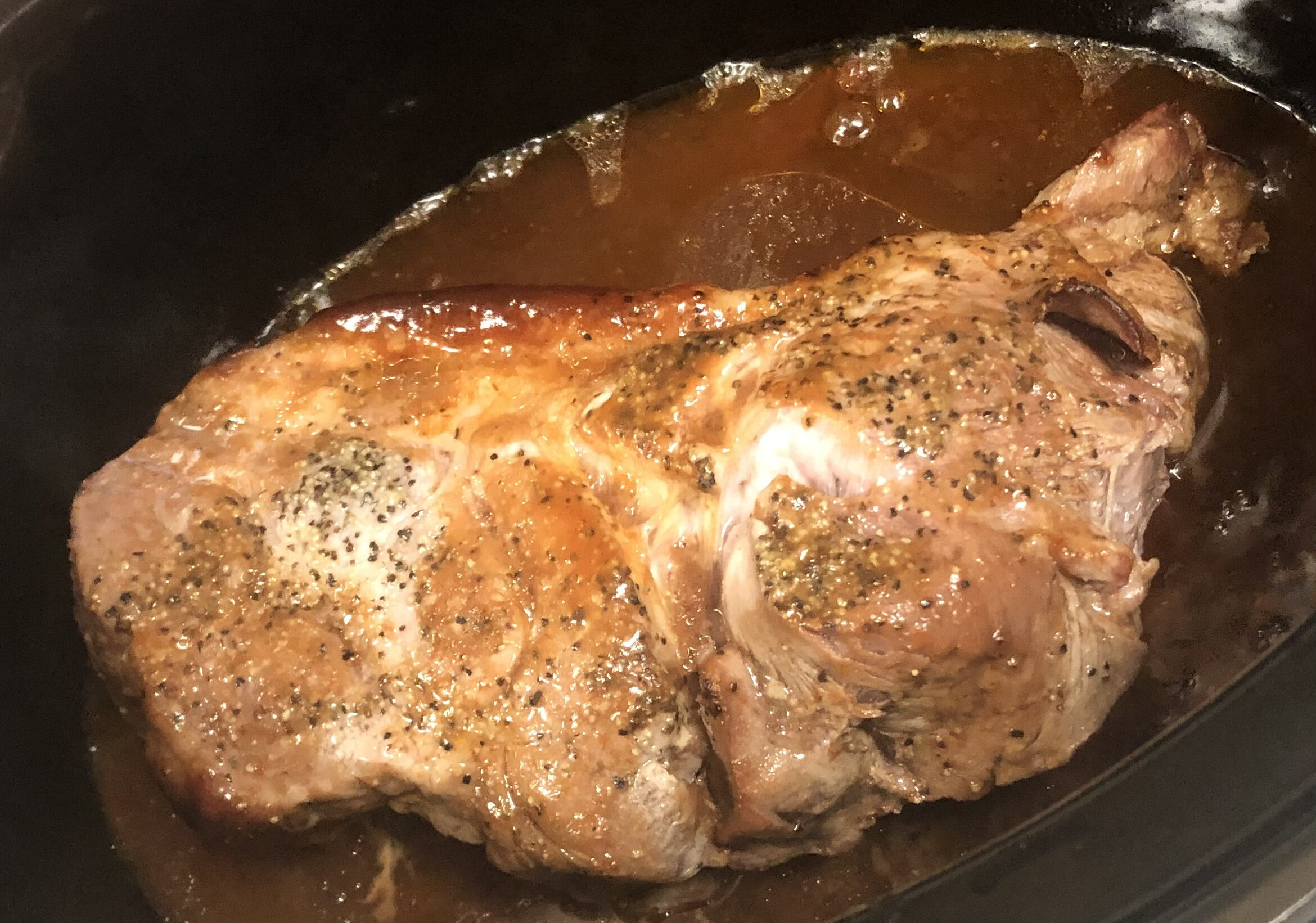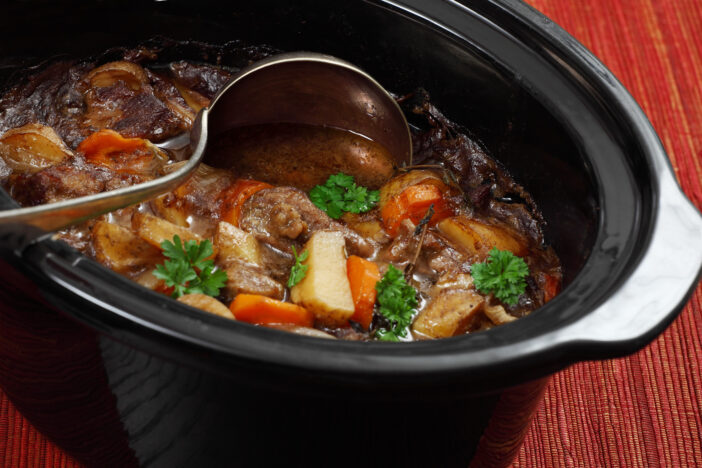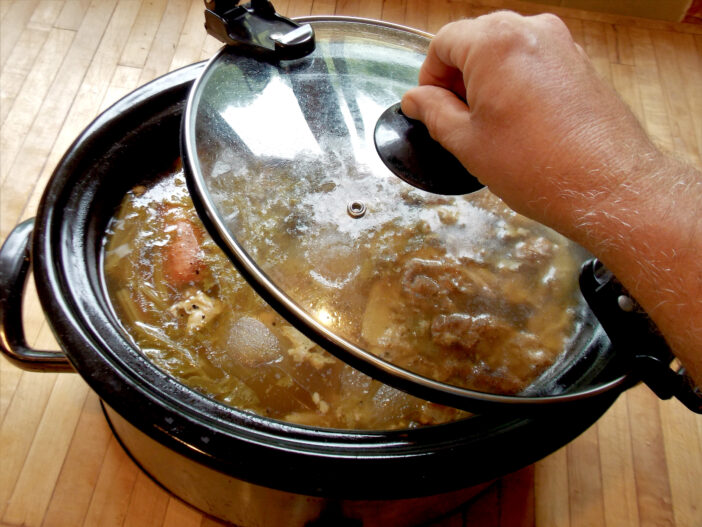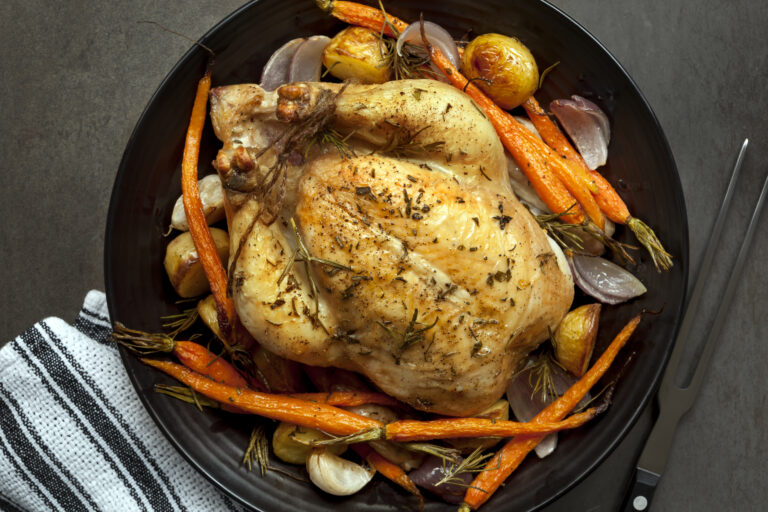5 Slow Cooking Meat Methods for Juicy and Flavorful Dishes
Slow cooking meat enhances flavor and tenderness, with methods like braising and smoking transforming tough cuts into delicious dishes.

Slow-cooking meat isn’t just about convenience; it’s a game-changer for flavor and tenderness. Discover how mastering these techniques can transform your meals into culinary masterpieces.
Disclosure: As an Amazon Associate, this site earns from qualifying purchases. Thank you!
Exploring Types of Slow Cooking Methods

Mastering different slow-cooking methods can transform your meat dishes into culinary delights.
Traditional Slow Cooking with a Slow Cooker
Opt for a slow cooker for convenience and consistent results. These appliances maintain a low, steady temperature, allowing you to cook meats over several hours. Beef stew and pulled pork are perfect examples of dishes that benefit from this method.
Braising: Combining Dry and Moist Heat
Choose braising when you want tender meat with a rich flavor. Start by searing the meat to create a flavorful crust, then cook it slowly in a covered pot with a small amount of liquid. Dishes like pot roast and short ribs come out melt-in-your-mouth delicious this way.
Smoking Meat for Deep Flavor
Infuse your meat with intense flavor by smoking it. This method involves cooking meat slowly over indirect heat with wood chips to add a smoky essence. Brisket, ribs, and chicken are ideal candidates for smoking, developing a deep, savory flavor profile.
Preparing Meats for Slow Cooking
Master the prep work to elevate your slow-cooked dishes. Proper preparation can make all the difference in flavor and texture.
Choosing the Right Cuts of Meat
Opt for tougher cuts. Use meats with more connective tissue like shoulder, brisket, and shanks, which break down over long cooking periods, resulting in tender, flavorful dishes. Avoid lean cuts as they can become dry and tough in slow cooking.
Seasoning and Marinating Tips
Season generously. Cover your meat with salt and herbs to penetrate deep into the fibers. Marinate for added flavor. Let it sit in the fridge for several hours or overnight using acidic bases like vinegar or citrus to tenderize and add complex taste profiles.
Pre-Cooking Preparation Techniques
Sear for flavor. Brown your meat in a hot pan before slow cooking to lock in juices and add a rich, caramelized layer. Trim excess fat. Cut off large fat portions to avoid greasiness in the final dish. Layer veggies first. Place vegetables on the bottom of the slow cooker, creating a flavor base and ensuring even cooking.
Slow Cooking Techniques for Different Meats

Understanding the best methods for slow-cooking each type of meat helps you achieve perfect results every time.
Beef: Ideal Cuts and Recipes
- Choose the Right Cuts: Opt for chuck, brisket, or short ribs. These cuts have high connective tissue, which breaks down during slow cooking.
- Season Boldly: Use a mix of salt, pepper, and garlic. Marinades with red wine or Worcestershire sauce enhance flavor.
- Try Classic Recipes: Beef stew and pot roast are perfect for slow cooking. Ensure you brown the beef before slow cooking to seal in flavors.
Pork: Best Practices for Juicy Results
- Select Cuts Wisely: Shoulder, butt, and ribs are ideal. These cuts stay tender and juicy when slow-cooked.
- Flavor Infusion: Rub with spices like smoked paprika and cumin. Use apple cider vinegar in marinades for a tangy finish.
- Focus on Low and Slow: Pulled pork and pork loin benefit from low heat and long cooking times. Keep the lid on to prevent drying out.
Chicken: Ensuring Moisture and Flavor
- Go for Whole or Parts: Whole chicken, thighs, and drumsticks work best. Avoid breasts, which can dry out.
- Keep it Juicy: Brine the chicken first, or use a flavorful broth with aromatics like garlic and thyme.
- Perfect Dishes: Chicken soup and coq au vin are excellent slow-cooking recipes. Ensure even cooking by placing the chicken on top of the vegetables.
Game Meats
- Select Saintly Cuts: Venison shoulder, wild boar ribs, or rabbit legs are great choices. These cuts benefit from slow, gentle cooking.
- Add Moisture: Use a marinade with red wine, juniper berries, and herbs. Game meats can dry out, so baste regularly.
- Tailor Recipes: Slow-cooked venison stew and braised rabbit are perfect. Always sear game meats first to lock in flavors.
Equipment Essentials for Slow Cooking Meat

Mastering the art of slow cooking requires the right tools. Here’s a quick guide to the essential equipment you’ll need.
Selecting the Right Slow Cooker
Choose a cooker with a timer and multiple heat settings. Opt for programmable models for more control over cooking times. For a family, a 6-quart size works well, while smaller households can use a 4-quart cooker.
Additional Equipment for Braising and Smoking
Use a Dutch oven for braising to get even heat distribution. Invest in a smoker if you enjoy adding rich, smoky flavors to your meat. Consider using a meat thermometer to ensure the right internal temperature in your dishes.
Maintenance and Care of Slow Cooking Appliances
Clean the removable parts of your slow cooker after each use. Avoid using abrasive cleaners on the interior. Regularly inspect the cord and plug for any wear and tear to ensure safe cooking.
Timing and Temperature Control

Effective timing and precise temperature control are key to achieving tender, flavorful slow-cooked meat.
Understanding the Importance of Low and Slow
Cooking meat at low temperatures for extended periods breaks down tough fibers and connective tissues. Using temps between 200-250°F ensures that your meat becomes tender without drying out. This method is essential for tougher cuts like brisket or pork shoulder, which need time to become melt-in-your-mouth delicious.
Using Thermometers to Ensure Perfect Doneness
Invest in a good meat thermometer to monitor internal temperatures. Your meat should reach safe internal temps without overcooking. For beef brisket, aim for an internal temp of 195-205°F. For pork shoulder, target 200-205°F for optimal tenderness. Accurate readings help avoid guesswork and ensure consistent results every time.
Enhancing Flavor and Texture

Techniques for Developing Richer Flavors
Browning the meat first enhances rich, deep flavors. Sear beef brisket and pork shoulder on both sides in a hot skillet before slow cooking. This caramelizes the surface, adding complexity. Use aromatic vegetables like onions, garlic, and carrots to impart natural sweetness. Add these at the beginning to infuse their flavors throughout the cooking process.
Deglazing the pan with broth, wine, or beer lifts residual bits, enriching your slow cooker dish. Incorporate herbs like thyme and rosemary and spices like paprika and cumin held in a spice bag for easy removal. Using a spice blend unlocks nuanced taste profiles over long cooking times.
Adjusting Liquid Levels for Optimal Textures
Too much liquid dilutes flavors, while too little results in dry meat. Cover meat halfway with broth or stock to strike the balance. Use thickening agents like tomato paste or corn starch near the end to achieve desired consistency.
Avoid adding too much water; the meat releases natural juices. Maintain moisture with a tight lid and minimal lifting during cooking. Adjust the liquid gradually as needed to keep the meat tender and the sauce rich.
Health Benefits of Slow-Cooking Meat
Nutrient Retention in Slow Cooking
Slow cooking retains essential vitamins and minerals better than other methods. High temperatures can destroy nutrients, but slow cooking keeps them intact. Vegetables and meat cooked this way hold more nutrients like vitamin A, potassium, and magnesium.
Reduced Fat Content Through Slow Cooking Processes
Slow cooking helps reduce fat content naturally. It allows fat to melt away, separating from the meat. The result is a leaner dish, ideal for those watching their fat intake. You get flavorful meat without the extra fat.
Frequently Asked Questions
What are the best types of meat for slow cooking?
Tougher cuts like beef brisket and pork shoulder are ideal for slow cooking due to their connective tissue, which breaks down and becomes tender when cooked low and slow.
What equipment do I need for slow-cooking meat?
Essential equipment includes slow cookers, Dutch ovens, and smokers. Each offers different benefits, such as convenience for slow cookers and the ability to retain heat well for Dutch ovens.
How does slow-cooking meat affect nutritional content?
Slow cooking helps retain essential vitamins and minerals better than other methods. Nutrients like vitamin A, potassium, and magnesium are preserved, making the dishes healthier.
What temperature should I cook beef brisket and pork shoulder to?
Cook beef brisket to an internal temperature of 195°F and pork shoulder to 205°F for optimal tenderness and flavor.
How do I ensure my slow-cooked meat is flavorful?
Browning the meat before slow cooking, using aromatic vegetables, and adjusting liquid levels can enhance flavor. These techniques help develop deeper and richer taste profiles.
Does slow cooking reduce fat content in meat?
Yes, slow cooking naturally reduces fat content by allowing fat to melt away, resulting in leaner dishes without sacrificing flavor.
What are some maintenance tips for slow-cooking equipment?
Regularly clean and check your slow cooker or Dutch oven for any wear and tear. Following manufacturer instructions for proper use and care will extend their lifespan.
Why is timing crucial in slow cooking?
Proper timing ensures that meat becomes tender without overcooking, preserving both texture and flavor. Cooking low and slow allows connective tissues to break down effectively.
Can I use any seasoning for slow-cooking meat?
Yes, but it’s best to use robust seasonings that can withstand long cooking times. Herbs, spices, and marinades enhance the flavor during the slow cooking process.
Are there health benefits to slow-cooking meat?
Indeed, slow cooking retains more nutrients and results in leaner dishes by reducing fat content, making it a healthier cooking method. It also minimizes the need for added fats or oils.






